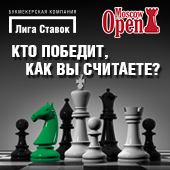Annotated by GM Alexander Kalinin
The smoke of the starting pistol has somewhat cleared, and after four rounds the tournament got three players in the lead with the perfect score. They are young Moscow GM Yuri Eliseev and two IMs (!) - Oleg Ivanov and Vassily Korchmar.
The following game was one of the key encounters of round 4.
A pawn's dream
In the Sicilian position with castling on opposite sides White began to advance his pawns against the opponent's king, as expected. What were the white pawns thinking about at that moment? «To capture the enemy king», perhaps a reader will think. Of course it would be nice but first of all each pawn dreams of becoming a Queen!
A brave soldier that came to h6 created excellent conditions for the endgame, in which the pawn's courage was fully rewarded.
IVANOV, Oleg - KHISMATULLIN, Denis
Russia Cup Stage 2016
1.e4 c5 2.Nf3 Nc6 3.d4 cxd4 4.Nxd4 Nf6 5.Nc3 d6 6.Bg5 e6 7.Qd2 a6 8.0–0–0 Bd7 9.f3
In the 20th century the main continuation was 9.f4, while now almost everyone prefers to put the pawn on f3 in the Sicilian with castling on opposite sides.
9...Be7 10.h4
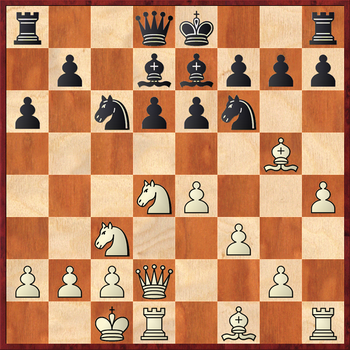
10...b5
One of modern alternatives for Black is 10...h6 11.Be3 h5!?.
11.Nxc6 Bxc6 12.Ne2
This is a typical maneuver transferring the knight to d4.
12…Rc8
In case of 12...e5 the white knight manages to occupy the d5-square - 13.Nc3.
13.Nd4 Bb7 14.g4 0–0
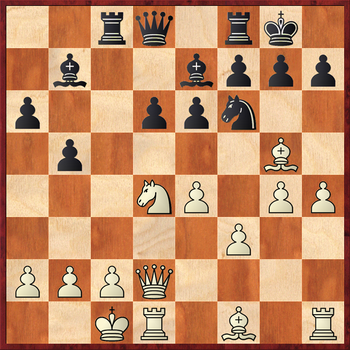
15.Rh2!?
A fresh idea. More often White acts straightforwardly, retreating with the bishop to е3 and beginning to push pawns on kingside. The White rook is well placed on the second rank (e.g. it protects the c2-pawn); in the meantime White neutralizes Nf6-d7 (with the idea of d6-d5) as in general it's in his favour to exchange the dark-squared bishops.
15...Re8 16.Kb1 Nd7
Black decides to determine the position but it was also possible to keep the tension - 16...Qc7 (or 16...Qb6 17.Be3 Qc7 18.h5 d5 19.e5 Qxe5? 20.Bf4) 17.Qe1 (17.Be3 Nd7) etc.
17.Bxe7 Qxe7 18.Qe1 Ne5 19.Qg3 b4 20.g5 Qc7 21.h5
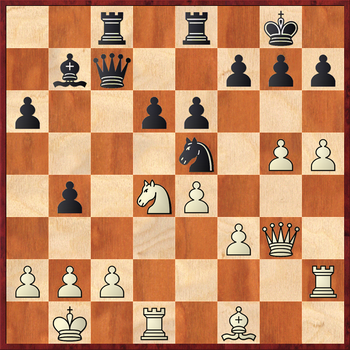
21...d5
Finally Black fulfils the long-awaited central breakthrough.
22.f4 Nc6 23.Nxc6 Bxc6 24.exd5 Rcd8
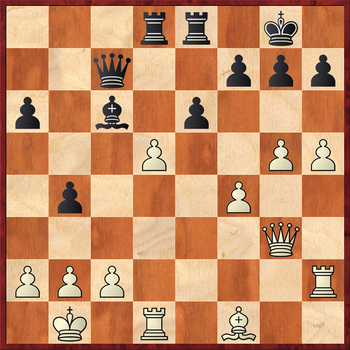
25.h6!
Instead of trying to open the lines against the king, White creates a strong h6-pawn which will be an excellent strategic asset.
25…Bxd5 26.Bd3 g6 27.Rhd2 Qc5
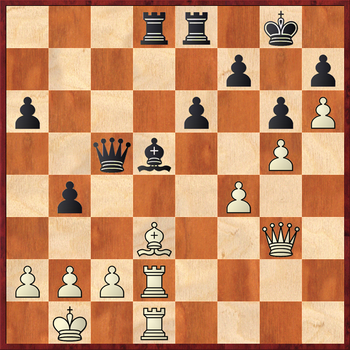
The rest of the game will be affected by the strong white pawn. The mating attack is hardly possible but every ending will be better for White!
28.Qe1 Bf3 29.Be2 Rxd2 30.Qxd2 Bd5
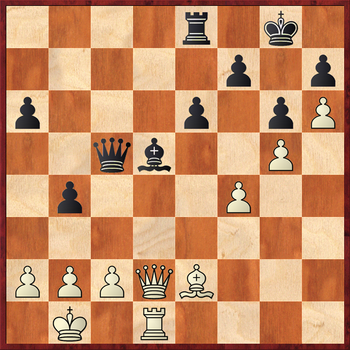
31.Qd4!
This decision is thus very logical.
31…Qxd4 32.Rxd4 a5 33.Bc4 Kf8 34.Bxd5 exd5

35.Kc1
35.b3! was more promising: 35...Rd8 36.Kb2 Ke7 37.a3 etc., keeping the pawn structure undamaged.
35...Rd8 36.a3 bxa3 37.bxa3 Ke7 38.Kd2 Kd6 39.Ra4 Ra8 40.Kd3
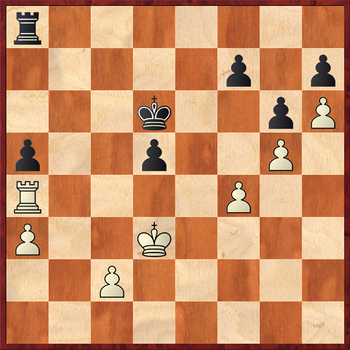
40...Kc5?
This natural move is a mistake. In case of 40...Ra7 White gets too many opportunities for the rook breakthrough to h7 by playing 41.c4 dxc4+ 42.Rxc4 etc. But 40...Ke6! was more precise: 41.c4 dxc4+ 42.Rxc4 Kf5! 43.Ke3 Kg4, activating the king.
41.f5!
The rook intrusion through the f-file is now inevitable.
41…Ra7 42.c3 Kc6 43.Rf4 Kc5 44.fxg6 fxg6 45.Rf8 Re7 46.Ra8 Re5 47.Rxa5+ Kb6 48.Ra8 Rxg5 49.Rh8 Rh5 50.Rxh7 Rh4 51.Rh8 g5 52.Ke3 Kb7
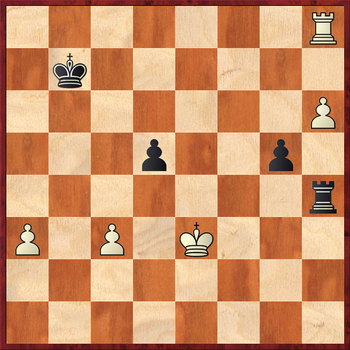
53.Kf3
53.h7 was more simple: 57...Rh3+ 54.Kf2 Ka7 55.Kg2 Rh4 56.a4 Kb7 57.a5 Ka7 58.a6 Rh6 59.Kf3 Rh4 60.Kg3, and Black loses because of zugzwang.
53...d4 54.cxd4 Rxd4
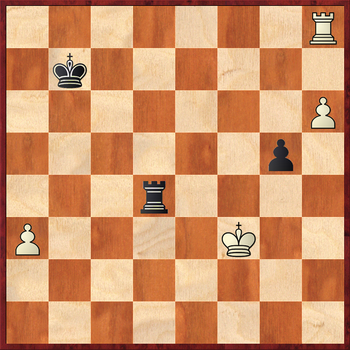
55.Rg8!
After the exchange on d4, 55.h7? would be already a wrong move missing the win.
55…Rh4 56.Rg6 Ka7 57.Kg3 Kb7 58.Rg7+ Kb6 59.h7 Ka6
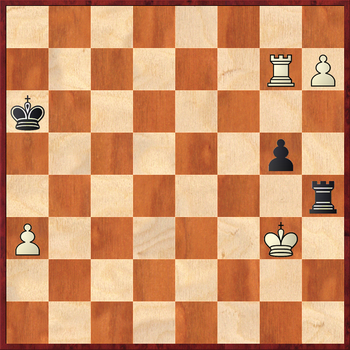
Now White drives the opponent into zugzwang, whereupon the
king‘s march to the h7-pawn will decide the game.
60.Kg2 Kb6 61.Kf3 Ka6 62.Kg3 Kb6 63.a4 Ka6 64.a5 Rh1 65.Kg4 1–0

